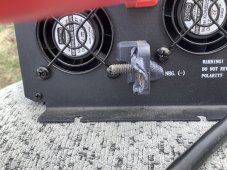HJEngland
New Member
- Joined
- Dec 28, 2022
- Messages
- 46
Today, I went outside and smelled a burning smell coming from my small solar system. The negative wire from the inverter to the battery had begun melting!
What would cause this? I have a very simple system of (1) Renogy 24v 320w solar panel, a Renogy Rover MPPT solar charger, a 2000w inverter, and a 12v 200 ah Renogy AGM battery. I have disconnected everything and removed the inverter.
I really am at a loss now... any insights would be much appreciated.


What would cause this? I have a very simple system of (1) Renogy 24v 320w solar panel, a Renogy Rover MPPT solar charger, a 2000w inverter, and a 12v 200 ah Renogy AGM battery. I have disconnected everything and removed the inverter.
I really am at a loss now... any insights would be much appreciated.




